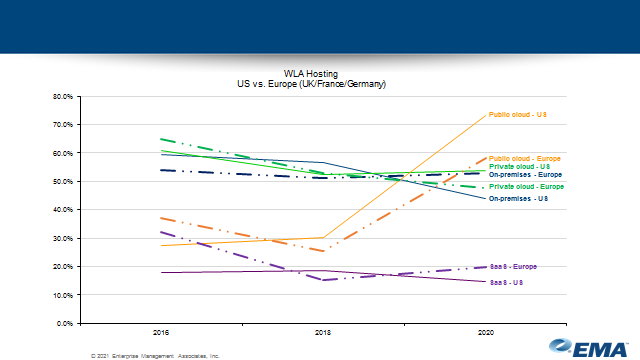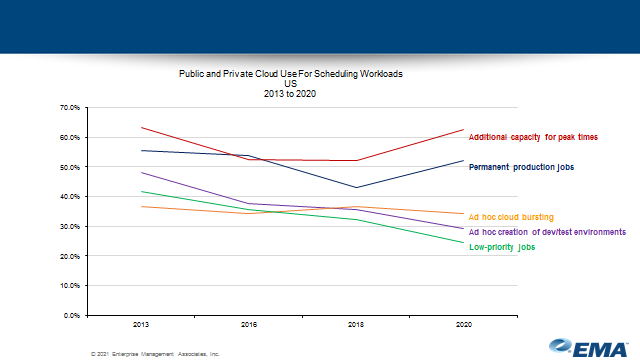The Human Component to Automation Success
by Dan Twing, President and COO, Enterprise Management Associates
IT organizations often put tremendous energy into picking the perfect software tools to manage their IT environments. This isn’t wasted energy, because the right tooling is important. However, the human side of IT operations is also important. Just like manufacturing, construction, and other production work, IT requires two key elements: equipment and people to operate it. In IT, that equipment includes the compute, storage, and networking infrastructure as well as the software tooling and applications to operate the infrastructure to do the processing work, support business processes, and develop new applications. Most IT organizations do a reasonable job establishing the basics to help the people side of things be successful. These basics include training, best practices, documentation, and establishing and measuring key metrics. In a stable, slowly changing environment, this is often enough to yield acceptable results—but modern IT is anything but stable and slowly changing. The significant movement to cloud computing, the massive amounts of data generated from ever-increasing digitized processes, and the significant pressure to increase automation are imposing constant change.
In such a changing environment, success requires more than good tools, training, and reliable processes. Automation in particular is challenging because of its impact on human work and changes in processes. Staffs need to be encouraged to identify opportunities for automation and empowered to think creatively to deploy them. Some organizations are more effective than most of their peers at aggressively and effectively addressing automation. Specific to workload automation (WLA), past EMA research shows that most organizations benefit from their use of automation tools, but some are super successful at more than just improved productivity and a reduction in errors. Based on dozens of interviews done for the EMA Radar Report on WLA in 2017 and 2019, EMA believes the most successful organizations create a culture of automation and get the most out of the tools they use. Processes are rethought and redesigned. Employees are empowered with better information and self-service capabilities that allow them to directly and positively impact business outcomes. EMA’s latest study on automation looks at human factors, such as leadership, organization, goals, empowerment, and attitude concerning automation, to attempt to identify characteristics of the most successful organizations.
The global study, “Democratizing IT Automation in a Multi-Cloud World: Tools, Teams, Culture, and Best Practices for Automation Success” includes 412 respondents from North America, Europe, and Asia/Pacific. Data was collected from IT and business staff, management, and executives who interact with or supervise WLA software. Many of these organizations have centralized scheduling with only a limited team defining jobs. Others have a core team to set naming standards and best practices, and help train broader teams of operations, developers, and even business users to monitor, launch, and define new jobs. Many organizations have created an Automation Center of Excellence (ACOE), but not all include the scheduling or other core IT operations functions in the purview of ACOE. The research also looks at the impact of corporate culture toward automation, the role of the automation team in broader IT operations and business process automation, and other characteristics of enterprises most effective at deploying automation.
Cloud computing has radically changed IT operations over the past 20 years and it is both increasing the need for automation and enabling the democratization of automation by allowing individuals more power than ever before to automate with low code/no code methods. Cloud computing affects WLA on two fronts: where the WLA software itself is hosted and where scheduled workloads run. EMA has been tracking WLA hosting since 2016. The chart shows US and Europe hosting trends (data for Asia was first collected in 2020). There is a definite spike in the use of public cloud to host WLA software, and 2020 marks the first time public cloud was the most used form of infrastructure to host WLA.

In 2020, 96% of organizations are using cloud resources to run scheduled jobs, with 47% using a mix of both public and private cloud infrastructure.

EMA has been tracking the use of public and private cloud for scheduling workloads in the US since 2013. While Europe and APAC were added in more recent studies, the first slide shows trends for cloud use for scheduled workloads in the US. Workloads are scheduled in the cloud most often for additional capacity during peak times (63%), with permanent production jobs on cloud infrastructure at 51% of organizations.

Other results from this study will be discussed during the research webinar on February 17.